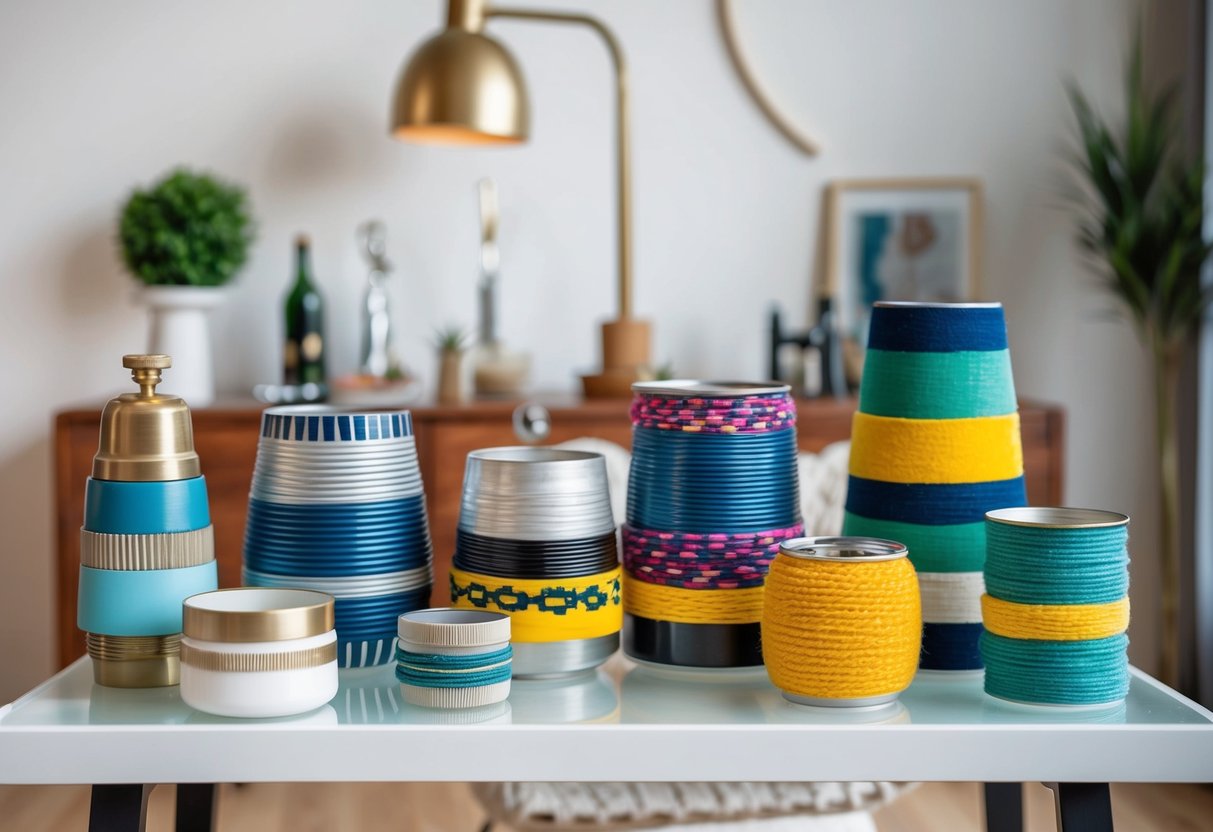Upcycled Home Decor: Turning Everyday Items into Beautiful Crafts
Furniture Transformation
Upcycled furniture offers an opportunity to breathe new life into old pieces. With creativity and basic tools, a worn-out wooden chair can become a vibrant accent with a splash of paint. An outdated dresser might be transformed into a modern storage solution with new handles and a polished finish.
While it is a way to preserve craftsmanship from older pieces, it also provides an eco-friendly alternative to purchasing new furniture. Individuals often personalize upcycled pieces to fit their style, transforming them into bespoke additions to their homes. This method extends the life of furniture, preventing waste and saving money.
Decorative Accents
Creating decorative accents from everyday items allows individuals to express creativity while sprucing up their living spaces. Candle holders crafted from glass jars or wine bottles offer an elegant touch to any room.
An old teacup can turn into a charming candleholder with just a wick and wax. Additionally, flower pots made from tin cans or plastic bottles provide a unique flair to windowsills or gardens. These projects often require simple materials but yield items that make a statement. Such accents not only reflect personal taste but also embrace sustainable living by repurposing materials that might otherwise be discarded.
Functional Home Ware
Functional home wares made from upcycled materials blend practicality with creativity. Old wooden crates transform into stylish bookcases or storage units. Bicycle tires become playful, colorful clocks.
Upcycling offers solutions for everyday needs while reducing waste. For example, glass bottles cut in half serve as unique drinking glasses or vases. Individuals find satisfaction in creating useful household items that repurpose materials that once had a different purpose. This approach cultivates innovation and demonstrates how seemingly useless items can have a new lease on life with a bit of effort and imagination.
Techniques and Finishes

Enhancing upcycled home decor with unique techniques and finishes can transform everyday items into stunning crafts. This involves applying paints and stains and incorporating textures and patterns to achieve desirable aesthetics.
Paint and Stain Applications
To give upcycled items a fresh look, paint and stain applications are essential. Chalk paint is popular for achieving a matte finish, providing a touch of vintage charm. It’s versatile and adheres well to most surfaces without the need for extensive prep work. Creative upcycling ideas often use contrasting colors of chalk paint to highlight details or add interest.
Staining wood items can enhance their natural beauty. Light stains bring out wood grain, while darker stains offer a more dramatic look. Applying multiple layers can deepen the color, offering a sense of depth. Stains are useful for elevating simple pieces, adding a luxurious feel without the cost of new materials.
Adding Textures and Patterns
Texturing techniques bring dimension to upcycled crafts. People use items like sponges, brushes, or even old rags to create varied surface effects, making each piece distinct. Faux finishes can emulate materials like marble or fabric, providing an upscale appearance at a fraction of the cost.
Patterns, another creative avenue, can be applied using stencils or freehand painting. Polka dots, stripes, or intricate designs contribute dynamic visual interest. Incorporating these patterns allows for personalization and creativity. Adding textures and patterns serves not only aesthetic purposes but also provides sensory richness, making upcycled decor more engaging and unique.
Successful Upcycling Projects
Upcycling projects transform ordinary objects into renewed treasures. Through creativity and patience, one can create unique pieces that add charm and character to any home. Case studies such as transforming a ladder into a bookshelf, designing a gallery wall, and crafting with wine bottles illustrate this process effectively.
Case Study: Ladder Bookshelf
Old ladders can become stylish and functional bookshelves. By utilizing wood or metal ladders, individuals can craft unique storage solutions by adding planks across the steps. Sanding the ladder and applying a fresh coat of paint or stain can enhance its appearance, allowing it to blend seamlessly with existing home decor.
Placing the ladder against a wall or using it as a freestanding unit adds an aesthetic touch to any room. This approach is not just about aesthetics but also about practicality. The design maximizes vertical space, offering plenty of room for books, plants, or decorative pieces. With minimal tools and materials, a ladder bookshelf is achievable for those willing to experiment with new ideas.



